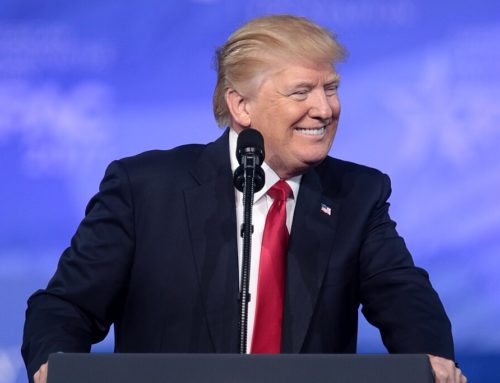1. Japan boosts chip sector
The semiconductor industry in Japan is one of the oldest and most influential in the world. Japan was the world’s largest semiconductor producer in the 1980s, but has since lost its dominant position to other countries, such as Taiwan, South Korea, and China. However, Japan still remains a major player in the global market, especially in certain device types, such as NAND memory, power semiconductors, microcontrollers, and CMOS image sensors.
Japan is seeking to revitalise its semiconductor industry by adopting new industrial policies, collaborating with foreign partners, and investing in research and development. Some of the recent announcements by Japan regarding the semiconductor industry are:
- Japan aims to rebuild its decimated semiconductor industry by tripling its sales goal to more than 15 trillion yen (US$108 billion) by 2030, investing in cutting-edge technologies, and strengthening its economic security.
- Japan enacted the Economic Security Promotion Act (ESPA) in 2022, which encourages Japanese companies to consider strategic risks and economic security in their decision-making.
- Japan and the United States agreed to cooperate on semiconductor issues, such as establishing a more resilient supply chain, pursuing joint R&D in key technologies, and forming a public research organization called the Leading-Edge Semiconductor Technology Center (LSTC).
- Japan announced that starting July 2023, it will implement controls on 23 types of advanced semiconductor manufacturing equipment, consistent with the Argon Flouride (ArF) DUV performance level or better.
- Japan selected Rapidus Corporation for the research and development project toward the establishment of future semiconductor manufacturing bases.
Some of the leading semiconductor companies in Japan are Renesas Electronics, ROHM, Shinko Electric Industries, and SCREEN Holdings. These companies produce a variety of semiconductor products, such as microprocessors, integrated circuits, discrete devices, and semiconductor equipment. According to the World Semiconductor Trade Statistics (WSTS), the Japanese semiconductor market is expected to follow the growth of the global semiconductor market, with anticipated double-digit growth in 2021 and 2022. However, Japan also faces many challenges, such as the global chip shortage, the competition from China, and the technological gap with the global leaders.
Recently Japan announced a further $13.3bn in funding to boost its semiconductor industry, split between manufacturing and R&D.
2. India UK FTA talks continue

tiago rosado via unsplash
India and the UK started negotiating the latest free trade agreement in January 2022 after the UK Government published its Strategic Approach to negotiating a free trade agreement (FTA) with India. The fourteenth round of negotiations for the UK-India Free Trade Agreement has just taken place. The negotiations cover 11 policy areas, including trade in goods, trade in services, investment, intellectual property rights, competition, government procurement, dispute settlement, and sustainable development. The agreement is expected to boost bilateral trade and investment, create new opportunities for businesses and consumers, and enhance cooperation on key issues such as climate change, digital trade, and innovation.
However, the two nations seem to be stuck over import duties on electric vehicles. The sticking point between the UK and India in the FTA negotiations about electric vehicles is the level of tariff reduction that India is willing to offer. The UK has a key offensive interest in reducing India’s tariffs on automotive products, which average 59% and can be as high as 125% for electric vehicles. The UK wants an agreement that slashes these barriers and allows British-made cars and Scotch whisky to access the Indian market more easily.
However, India is reluctant to lower its tariffs on electric vehicles significantly, as it wants to protect its domestic industry and promote its own manufacturing under the Make in India initiative. India is also concerned about the environmental impact of importing more vehicles that run on fossil fuels. India is proposing to reduce the import taxes on some high-value electric vehicles from the UK by 30%, but only for up to 2,500 units annually, and only for those priced over $80,000. This offer is unlikely to satisfy the UK, which is seeking a more comprehensive and ambitious deal that covers a wider range of products and sectors.
Therefore, the two sides are still negotiating on how to resolve this issue, which is one of the main obstacles to concluding the FTA by the end of the year. The FTA is expected to boost bilateral trade and investment, create new opportunities for businesses and consumers, and enhance cooperation on key issues such as climate change, digital trade, and innovation. However, both sides will have to make some compromises and find a balance between their offensive and defensive interests to reach a mutually beneficial agreement.
3. Taiwan Britain FTA talks begin

sam chang via unsplash
The UK and Taiwan have agreed to start official-level talks on an Enhanced Trade Partnership (ETP), which will be underpinned by non-legally binding Memoranda of Understanding in key areas such as two-way investment, digital trade, and energy & net-zero. The ETP will build on the ongoing collaboration through annual Trade Talks, which will take place in London later this year. The UK and Taiwan have a long-standing trade relationship, with bilateral trade worth £8.6bn in 2022.
The UK has a key offensive interest in reducing Taiwan’s tariffs on automotive products, which average 27.8% and can be as high as 87.5% for electric vehicles. The UK also wants to increase its exports of Scotch whisky, pharmaceuticals, and financial services to Taiwan. Taiwan is an important partner for the UK in green transition, especially in areas such as off-shore wind and hydrogen. Taiwan is also a champion of free and fair trade underpinned by a rules-based global trading system.
However, China views Taiwan as part of its territory and has stepped up its military presence surrounding Taiwan.
However, last month Taiwan completed a bilateral agreement with Canada to boost foreign investment, and in August US President Joe Biden signed legislation on implementing a new trade initiative between the United States and Taiwan. In addition, Taiwan is now a fully fledged member of the World Health Organisation. Taiwan has also recently applied to join the CPTPP trade bloc where Britain is the newest member, it’s expected that Britain would support Taiwan’s accession.
4. Thailand investment up 22%

sumit chinchane via unsplash
Thailand has reported a 22% increase in investment applications to Q3 in 2023 mostly in the electronics, food, and auto sectors led by China, Singapore and Japan, equating to a 43% increase in FDI.
Thailand’s performance in terms of foreign direct investment (FDI) inflows and outflows has been mixed compared to other countries. According to the latest data from UNCTAD, Thailand received $11.42 billion of FDI inflows in 2021, which was a significant increase from the negative $4.8 billion in 2020. However, this amount was still lower than the $14.1 billion in 2019 and the $10.8 billion in 2018. Thailand ranked as the 28th largest recipient of FDI inflows in the world in 2021, and the 7th largest in Asia. The main sources of FDI inflows to Thailand were Japan, Singapore, Hong Kong, China, and the Netherlands. The main sectors that attracted FDI inflows were manufacturing, financial and insurance activities, real estate, trade, and information and communication.
On the other hand, Thailand’s FDI outflows amounted to $17 billion in 2020, which was more than double the $8 billion in 2019. Thailand ranked as the 15th largest source of FDI outflows in the world in 2020, and the 4th largest in Asia. The main destinations of FDI outflows from Thailand were China, Japan, Singapore, Vietnam, and Indonesia. The main sectors that received FDI outflows from Thailand were financial services and manufacturing.
Thailand’s FDI performance can be influenced by various factors, such as its economic growth, political stability, business environment, trade policies, and regional integration. Thailand has been and continues to be one of the most successful countries in the region for attracting FDI, due to its numerous advantages for foreign investors seeking to do business in Asia. It provides an attractive business climate which has consistently received decades of support for private investment from successive Thai governments, all of which have realized the important role of the private sector in creating and maintaining Thailand’s economic growth and prosperity along with its technological development. Thailand also has a strategic location in the heart of Southeast Asia, a large and growing domestic market, a skilled and cost-competitive workforce, a well-developed infrastructure, and a strong network of free trade agreements with major trading partners. Thailand continues to improve its attractiveness for FDI through many government initiatives which seek to make the country more accessible to those seeking to expand their presence in Asia while at the same time reducing the amount of “red tape” required for beginning or expanding such business activities.
However, Thailand also faces some challenges and risks that may affect its FDI performance, such as the ongoing COVID-19 pandemic, the political uncertainty, the social unrest, the environmental issues, the income inequality, the aging population, the skills gap, the digital transformation, and the global competition. Thailand needs to address these challenges and risks effectively and efficiently, and to leverage its strengths and opportunities, in order to enhance its FDI potential and competitiveness in the post-pandemic era.
5. Saudi Arabia FDI up 20%

safaa almohandis via
unsplash
According to the UNCTAD World Investment Report 2022, Saudi Arabia’s FDI inflows increased by 20% to USD 5.39 billion in 2020, up from USD 4.56 billion in 2019, ranking it 10th in the country. The FDI inflows further rose to USD 19.28 billion in 2021, reflecting the resilience and attractiveness of the Saudi economy.
The main sources of FDI inflows to Saudi Arabia in 2020 were the United Arab Emirates, the United States, France, Singapore, Japan, Kuwait and Malaysia. The main sectors that attracted FDI inflows were manufacturing, financial and insurance activities, real estate, trade, and information and communication.
Saudi Arabia’s FDI outflows declined sharply in 2020, dropping by 64% to USD 4.9 billion, down from USD 13.6 billion in 2019. However, the FDI outflows rebounded to USD 23.86 billion in 2021, indicating the recovery and expansion of Saudi investments abroad.
Saudi Arabia has been implementing various policies and initiatives to enhance its FDI potential and competitiveness, as part of its Vision 2030 plan to diversify its economy and reduce its dependence on oil. Some of these policies and initiatives include:
- Adopting seven “Guiding Principles for Investment Policymaking”, which aim to provide a transparent, predictable, and sustainable framework for investors.
- Upgrading the Saudi Arabian General Investment Authority (SAGIA) to the Ministry of Investment (MISA), which is responsible for facilitating and promoting investment in the Kingdom.
- Launching the “Program HQ” initiative, which offers incentives and benefits to multinational companies that choose to establish their regional headquarters in Saudi Arabia.
- Introducing the “Invest Saudi” platform, which provides information and services to potential and existing investors, such as sector profiles, investment opportunities, and regulatory updates.
- Signing and ratifying several bilateral and multilateral agreements on investment protection and promotion, such as the Comprehensive and Progressive Agreement for Trans-Pacific Partnership (CPTPP) and the Regional Comprehensive Economic Partnership (RCEP).
Featured image Jezael Melgoza via Unsplash







